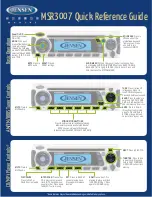
Raisecom
iTN8600-I (A) Product Description
5 Appendix
Raisecom Proprietary and Confidential
Copyright © Raisecom Technology Co., Ltd.
32
5
Appendix
The appendix lists references, terms, acronyms, and abbreviations, including following
sections:
Lookup table of optical module parameters
Compliant standards and protocols
5.1 Lookup table of optical module parameters
During any operation or maintenance process, pay attention to laser safety. Do
not stare into the optical interface or fiber connector with eyes directly or through
an instrument, to prevent laser from damaging eyes.
Before connecting the fiber, use an optical power meter to measure the current
optical power of the fiber. When the current optical power is smaller than the
overload point of the optical module, you can connect the fiber. When the current
optical power is greater than the overload point, bit error or device damage may
occur. When the current optical power is lower than the sensitivity, services will be
blocked. For the technical specifications of the optical module, refer to manuals of
optical modules or this section.
When using an optical module, do not use an optical fiber jumper to perform hard
loopback (in other words, connect the Tx interface of the optical module to the Rx
interface through a fiber); otherwise, the device may be damaged.
When using a long-distance optical module with a target distance of 20 km or less,
40 km (dual-fiber model), 30/40 km (single-fiber module), 60 km, 80 km, or 100
km or more, you must use a 5 dB, 10 dB, 15 dB, 15 dB, 15 dB, or 20 dB fiber
attenuator respectively to make the optical power smaller than the overload point,
so that you can use the optical fiber jumper to perform hard loopback.
















































